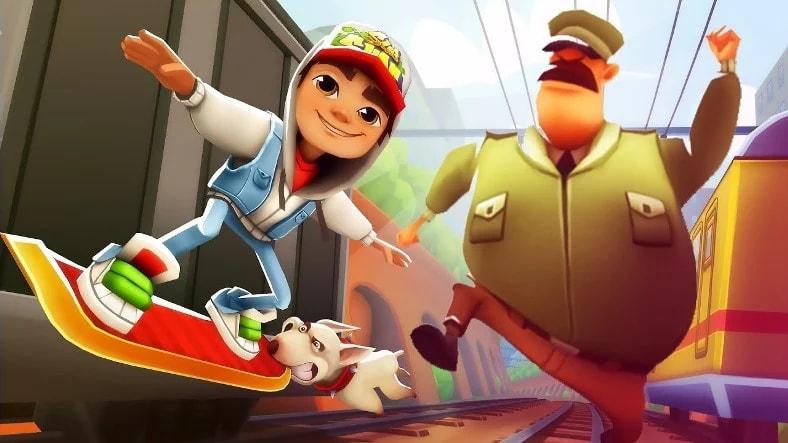Game mechanics is a term that almost everyone hears about in the game world. Game mechanics that directly affect the quality of a game are essential. One of the secrets of making a successful game is choosing the correct game mechanics and processing them well. It is generally more fun and interesting to play games with strong mechanics on the player side. So what is this game mechanic? In this article, we have prepared a guide for you.
What is the game mechanics?
Game mechanics are the factors that provide the interaction between the game and the player. Without a game mechanic, the player cannot interfere with the situations in the game. A game’s mechanics can take many different forms depending on its game. The mechanics in a racing game will be different from a fighting game. At the same time, the mechanics of a role-playing game are very different from a hyper-casual game.
All video games necessarily contain mechanics. However, the importance given to these mechanics will vary according to the type and structure of each game. For example, What Remains of Edith Finch has no fighting mechanics, and it doesn’t matter. Our goal in this game is to learn the story of the Finch family, and the game is story-driven. On the other hand, nothing is left if you remove the fighting mechanics from Mortal Kombat.

If we think more generally, different mechanics stand out for each type of game. Among the basic mechanics of role-playing games are “dialogues.” However, the weapons and combat mechanics stand out more for an FPS game. We can consider any technical factor that allows the player to interact with the game. Of course, these mechanics are not entirely lawless and haphazard.
Difference between game mechanics and game dynamics
The terms game mechanics and game dynamics are two different things. Game mechanics are more of a technical matter. Game dynamics is a sub-title of game design. Let’s try to explain this with an example over the FPS game.
In an FPS game, your character’s weapon will fire, causing a recoil and dealing damage if the bullets hit an enemy. This is an example of game mechanics. Game dynamics is a bit more of a design issue. The game dynamics are how the conflict you enter in the FPS game makes you feel, whether the weapon and enemy reactions are realistic or whether the game makes you feel like you are doing something different even though you are constantly using the same mechanics.

Although the weapon and combat mechanics used in two different FPS games are the same, the game dynamics may differ. While one is a very popular game, the other may not be played. For this reason, we can say that game mechanics are “technical game rules.” Game dynamics is a more design element related to gameplay.
Types of game mechanics
There are many genres and subgenres of game mechanics. You can see more than 300 game mechanics listed in various sources. However, these different mechanics usually arise from the main mechanics and diversify. This main game mechanic is called “core mechanics.” A game is generally built on this core. Additions and deletions to this core are at the discretion of the developers. Before moving on to game mechanics examples, let’s talk about some concepts.
What is the core game mechanics?
Core mechanics are the central systems on which the game is built. Core mechanics are used over and over in the game. Such mechanics are necessary for the game to exist. Otherwise, it will not be possible to talk about a game.
Core game mechanics can contain only one mechanic. For example, the core mechanic in running games is “running.” If you remove the running mechanic from the game, there is nothing left. Core mechanics are generally simple but very powerful.
What are secondary game mechanics?
Secondary game mechanics are mechanics used to add additional gameplay options and fun elements to games. If we go with the example of the running game, you can add shoes to the game that allow you to run faster and thus add variety. What is done is a relatively simple process. You add a mechanic that increases the character’s speed only when certain conditions are met.
Such mechanics are not indispensable in games. They can be added, removed, and edited. Almost every video game we encounter today has such mechanics, and they are used to contribute to the game dynamics.

Basic game mechanics
Many of the game mechanics may not have a unique name. Some game mechanics are named the same as the type of game they are used in.
Here are the basic and popular game mechanics:
- Turns: Turn-based game systems. It is the mechanic in which players interact with the game in a certain order. It has been used in many games.
- Action Points: A mechanic where players spend some form of points to interact with. When the points run out, the player loses the right to make a move. In addition to its simple use, the Action point system can be diversified and used in ways that the player may not even notice. For example, MANA, which allows you to use abilities in some games, is based on this system.
- Auction or Bidding: It is an auction system in its simplest form. While it is used as the main mechanic in some games, it is possible to see it as a secondary mechanic in many games.
- Cards: There are many card games today. As the name suggests, it is the primary mechanic where we interact with the game using cards. It is often used in conjunction with other mechanics in many other games.
- Capture/Eliminate: The most commonly used mechanic in mission-based games. While it appears as seizing territory in strategy games, it can occur in different forms in FPS games.
- Dice: One of the most basic game mechanics. It can be used to determine the luck factor during the game. Dice mechanics are used in many games. You’ve probably played a game with such a mechanic, even if you don’t realize it.
- Movement: It is a game mechanic based on activity. You use it to avoid obstacles in platform games. It is possible to talk about this mechanic in all types of games where you will fail if you stop moving.
- Resource Management: It is the mechanic where you must constantly manage your resources. It is especially used in strategy games.
- Risk and Reward: The game mechanics requires constant choices and offers rewards in line with the choices. For the simplest example, you can think of a quiz. You will be rewarded for the correct answer and eliminated for the wrong answer. Of course, its usage area is not limited to this, and it is used quite extensively today.
- Role-Playing: It is the mechanic where you play a character. In such games, you are not treated as a player but as a character within the game world. This can affect many things.
- Tile-Laying: The basic mechanics of game worlds are divided into plots. It is often used in strategy games. Sometimes you try to place something inside the map divided into tiles, and sometimes you try to empty it.
So these game mechanics go on and on. You can study a mechanic as a “combat mechanic” and treat it as a whole. On the other hand, this mechanic can be divided into a sub-title as “weapon mechanics.” For this reason, there is no way to cover each game mechanic individually. You can talk about puzzle mechanics or timing mechanics if you want.
Whatever the name of these various game mechanics, there are four foundations on which they are based. The four main components of the game mechanics are as follows:
- Quantity: Mechanics that can be represented as numbers. Examples include life, mana, energy, and currencies.
- Spatial: Mechanics that affect space. Positions and rotations of objects, tangible things like characters and accessories, and intangible things like inventory and storage fall under this heading.
- State: Mechanics that apply additional rules. It includes whether the player is in the air or on the ground, swimming, whether an object is active or passive, open or closed, etc.
- Action: Mechanics that drive change. It includes many items such as health and mana regen, running, jumping, teleporting, unlocking, and opening doors.
These mechanics can be used alone or in combination. The more flexible the technical rules, namely the “game mechanics,” the more content can be added. Using multiple game mechanics to create a strong game dynamic can be beneficial.
Can game mechanics be copyrighted?
It is not possible. You cannot copyright a game mechanicS. The game mechanics reflect the things that already exist, such as running, shooting, matching, swimming, dressing. In this respect, it is not possible to copyright a game mechanic. On the other hand, if you have developed code that has not been specifically written before, you may be able to patent it. In such a case, you will have patented the code you wrote, not the mechanics in question.
Let’s give an example of this: anyone who can run cannot claim the act of running. But if the person running is running with your shoes, then you can claim. The act of running here represents the game mechanics, and the shoes represent the codes you wrote.

Bonus: Hyper-casual Game Mechanics
Hyper-casual games are very entertaining and based on simple mechanics. Such games inherently contain simple mechanics. What these mechanics are can be easily understood from their names. They basically rely on a simple finger movement or action.
Hyper-casual game mechanics:
- Swerving mechanics
- Dragging mechanics
- Tapping mechanics
- Tap and hold mechanics
- Aiming mechanics
- Tap and timing mechanics
- Drawing mechanics
- Typing mechanics
One or more of them come together to form a hyper-casual game. Hyper-casual games are simple to play, so these types of games can appeal to all gamers. Well-executed mechanics and game design can make a hyper-casual game reach millions of people in a short time.





